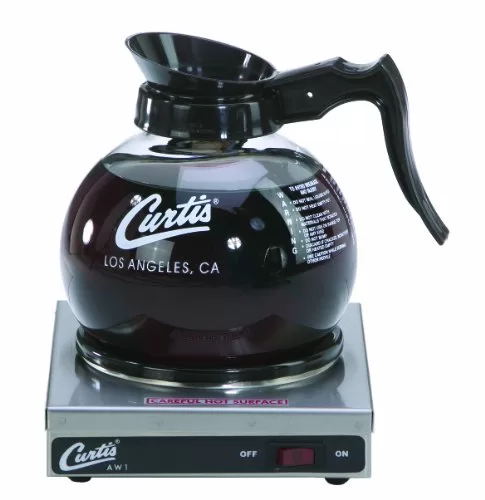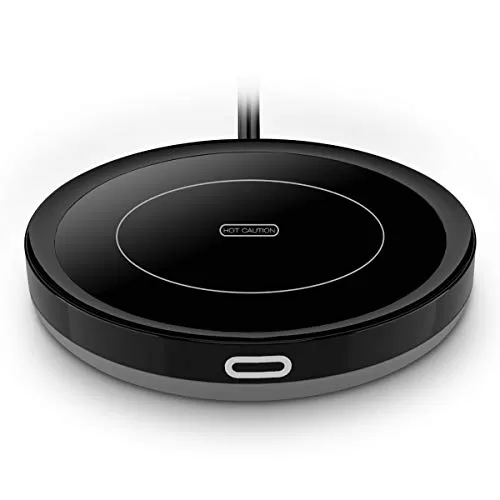Keep Your Coffee From Getting Cold: Reheat It!
Despite previous sentiments, recent research shows that it is possible to reheat coffee without compromising the taste. However, low heat with a heating pad or double-boiled pot should suffice to retain flavor and aromatic subtleties.
Coffee has a complex and interesting science behind it, but as with anything that is reheated it loses some color, the antioxidants. However, certain steps can help you avoid the potential harm.
Everything you need to know: How to reheat coffee?
Reheating coffee can change its flavor; before reheating your coffee, it’s important to remember that the heat during the roasting and brewing process will have an impact on the coffee. Heat changes a lot of this coffee’s taste and bitterness for the worse, so try enjoying your coffee as fresh as possible by either using brew-stop technology or reusing glass bowls.
Different beans have different levels of taste, acidity, and aroma. Understanding how the ingredients are packaged into a coffee bean is important for creating excellent coffee.
The Problem
The problem is that volatile compounds are volatile, so they tend to burn off as coffee roasts for a longer period of time. Heat also breaks down non-volatile compounds during the roasting process and effectively creates many of the beloved volatile compounds.

Evidence suggests that light roasts have a more distinct taste and aroma from volatile compounds. However, dark roasts have a roasted and burnt taste. Either way, the longer the coffee roasts, the more those unique flavor notes tend to disappear in favor of other tastes.
Brewing coffee leads to another round of changes in the chemical composition of coffee. The hot water extracts certain coffee compounds into our cup, and good coffee brewing is about extracting the good compounds (namely, volatile compounds) while avoiding others.
Too much heat will over-extract compounds that are bitter, like Β-carotene and caffeic acid, which is why proper water temperature is so important for brewing coffee. For example, the high-quality Saeco eDomus coffeemaker ensures your espresso maintains an optimal temperature out of the tube.
Studies show that little amounts of caffeine give you the same benefits as pouring droplets of pure, brewed coffee. One study from Johns Hopkins Bloomberg School of Public Health found that drinking 20 ounces of iced brewed coffee decreases the risk of type 2 diabetes, as previously thought.
What do you need to know about reheating coffee?
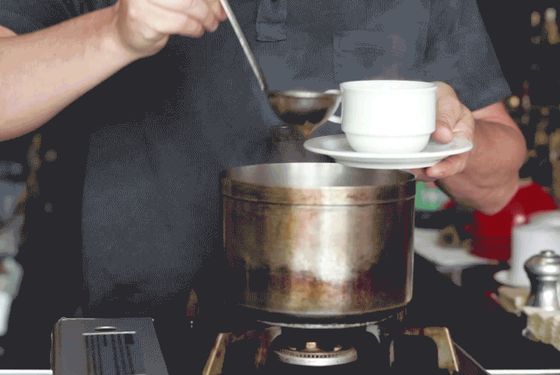
Reheating coffee causes additional changes to happen, just like brewing an original cup. When you technically drink the same thing twice, you are exposing yourself to the caffeine twice with possible differences in flavor each time.
Coffee beans have acids, compounds, and oils that are released during the brewing process. These flavors are flavorful in order to give coffee drinkers the taste they see as enjoyable.
When reheating coffee, the oils, acids, and compounds that were left behind after the brewing process become exposed to a second decaffeination. This extra process can result in oils and acids that create an unpleasant taste, like caffeine acid. The process also burns off some volatile compounds which contribute to flavor while more chlorogenic acids convert into bittersweet caffeic acid.
Reheating coffee can also lead to the loss of more helpful nutrients (caffeine, amino acids) and an increase in bitter flavors. A microwave oven heats the coffee unevenly, meaning surrounding heat will cook the untouched liquid faster.
The best way to reheat coffee is to use a Klean Kanteen Standard Double Wall Insulated Stainless-Steel Bottle, Insulated Thermos, or Tumbler. This can protect coffee flavors and diminish the risk of burnt flavor in coffee that has been exposed to heat unnecessarily. For instant coffee, avoid reheating until it’s cool before trying again.
How to reheat a cup of coffee
It’s normal to not drink your coffee straight away. While we recommend using fresh beans, sometimes you need the convenience of reheating it when you run out.
In order to properly reheat coffee, use the minimum heat necessary. This avoids the negative chemical reactions happening as it would if using a higher heat setting.
Coffee is best served hot and tastes better at a slightly lower temperature than if it were freshly brewed. But not enough that the heat will cause chemical changes. Heating to 60 degrees Celsius maximizes taste as it mitigates the most change in chemical levels.
These two approaches work to preserve the taste and flavor of coffee in two specific ways.
What does the stove do to coffee, when boiled?

When you notice that your coffee is getting cold, don’t worry about it. One of the best ways to reheat it and make it perfect again is by reheating in the stove pot. Follow these three steps to get the best results:
If you want a pot of coffee, pour the coffee from the mug into a small pot. Heat coffee until it starts to steam. Do not allow the coffee to boil. Next, pour your coffee back into a cup (preferably not porcelain, as the newly warmed coffee will stay hot for an extended period of time).
When it comes to coffee, many people reheat the leftovers to try and drink the brew. This method of making your drink reheat will not destroy the compounds and oils that are found in this beverage. You can also benefit from this method by using less coffee. However, reheating your wiener after an hour and a half may lead to an unpleasant taste.
Reheat Your Coffee with a Microwave
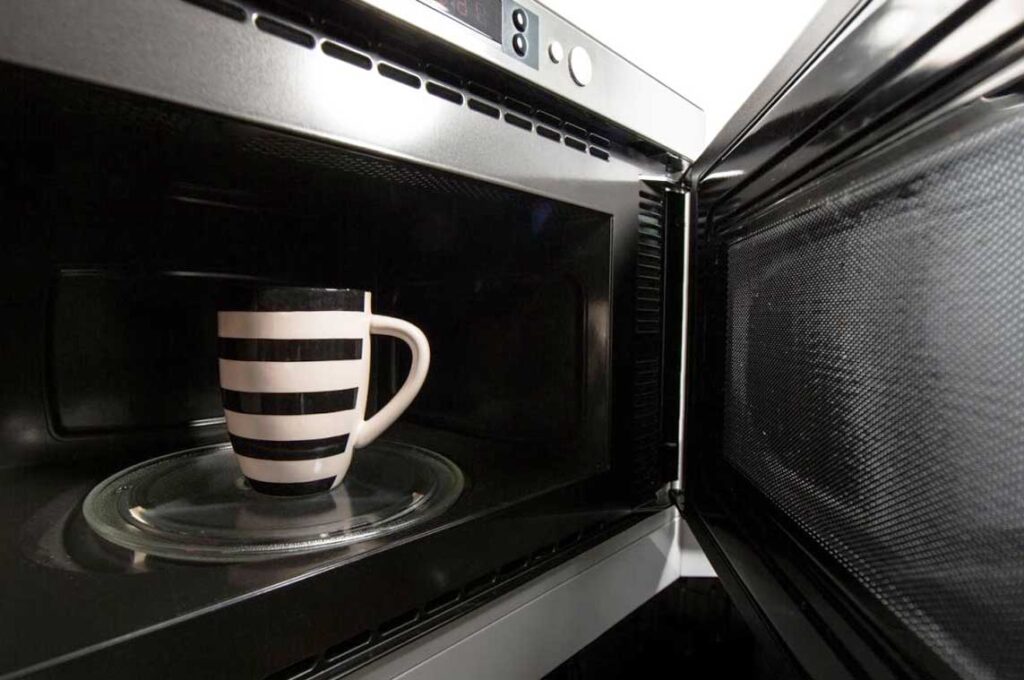
When you haven’t got time to wait for your coffee to cool, cooking it with a microwave is another option. To avoid compromising taste, make sure you change your machine’s settings.
How to best reheat your coffee in a microwave
Reheating coffee: there are a couple of things you need to know. Set your microwave power to 80% and add water to your coffee mug before microwaving it. Heat at 30-second intervals, checking the temperature after each cycle.
Starting with high power and gradually reducing it is the best way to reheat coffee. -taking into account that the taste can turn bitter-. Apart from lowering the temperature, one should also add milk to avoid burning the drink.
One way to combat the bitter taste that can come from microwaving coffee is by adding creamer, milk, or half and half.
How Reheating Coffee Affects the Taste of Your Cup
Reheating a cup of coffee can be rewarding, but you must do certain things when doing so. These include:
Five things you should never reheat
Coffee purists may not want to reheat or add milk or creamer after brewing coffee. Dairy or additional ingredients can clog the pores in the coffee’s filter. Heating milk, for instance, brings an unpleasant taste to pre-brewed coffees.
The longer your coffee sits outside of the refrigerator, the more likely stomach pain or other health concerns will occur. Avoid this by not adding dairy products to your cup and reheating only with cold water instead of the microwave.
Careful you don’t burn your coffee when you reheat it in a microwave
Reheating coffee isn’t always a science. Get to know what kind of coffee, milk, water, and consistency you traditionally like. The most by brewing one cup the way you would drink it normally. Then reheat some.
If your coffee gets too hot, you can burn it. Recently, a study has found that 78% of people think too-hot coffee tastes worse and 60% of people have bothered to put ice in their coffee to cool it down.
Stuff to know about heating coffee for later on
How to reheat coffee on a warming plate
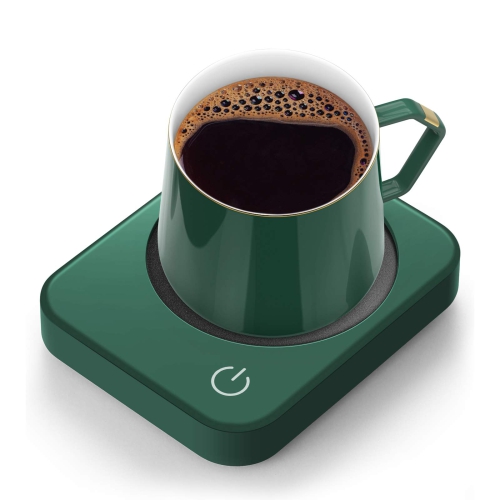
Simply keeping your pot of brewed coffee warm for many hours after brewing it can cause the reheated coffee to taste sour. This occurs because hot water extracts different strengths and tastes from coffee, depending on the brewing time.
Keeping coffee heated for 15 minutes is just like using the wrong grind size— it will diminish the taste. The ideal way to reheat your coffee, in order to maintain its integrity and flavor, is to heat it for about 30 seconds.
Reheating coffee can take the taste of your cup from heavenly to hell. Reheaters will often add a strong taste to the heating process. But if you’re using a French press and inserting grounds into your pot for every brew, some particles are also going into your coffee. Reporters at Chemical & Engineering News think that’s because pots have larger surface-area-to-volume ratios than an individual French press.
We all appreciate the warmth and comfort of coffee, brewed from our stovetop pot that warms our homes on a winter day. However, leaving your coffee maker on ‘warming’ will only make the bitterness or scalding flavors worse. Brewing for longer periods of time with particles already in suspension continues to brew, dragging out the time for a bad taste to form.
4 Really Basic Ways to Screw Up Your Coffee
Here are the best ways to reheat coffee without affecting the taste.
How brewing small batches can make coffee last longer
Habitual coffee drinkers may find themselves visiting the in-house espresso machine too frequently to feel that a whole pot is necessary. Thankfully, there are many different ways to brew coffee. And most new machines have espresso functions for both hot drinks and iced beverages.
When you reheat coffee, there are many benefits. First, you have access to fresh coffee without the fear of having the pot of coffee that is still sitting in the pot lose its perfect taste. Second, if you decide you want another cup, you can always make another one of the same size and amount and instantly have another mug of hot, delicious java!
Is it safe to reheat coffee?
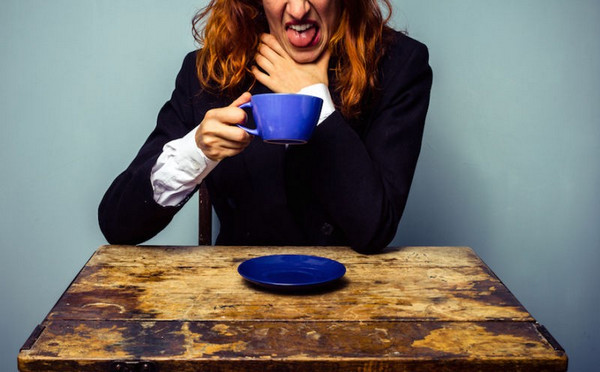
Different ways to make coffee are available, but many people neglect to bring their travel mugs home. Reheating coffee is already a quick and easy task, but it is important to think about how to appropriately heat up unused grounds from a public cup.
You can enjoy iced coffee for long periods of time using a thermal cup. The insulation in these type of cups keeps the heat inside and prevents over-brewing. Unlike ceramic coffee mugs, thermal cups are not heated which helps to eliminate particles and maintains bitterness.
Coffee’s cold twin: the freezing process and how it has changed our lives
Cold coffee is on the rise in the US, with people exchanging piping-hot shots of black or even chocolate liquids for chilled alternatives.
Reheat coffee without it going lukewarm by not adding ice. Fill a glass-like large mug up to the top with coffee, add as much cream and sugar as you like, pour in some hot water, and stir.
Sometimes consumers are hesitant to drink cold coffee, but there are many tips that can be used for making iced coffee as yummy as warm coffee. Here is a guide on everything you need to learn about reheating coffee.
Coffee botherers want to have a great cup of coffee every time, but doing so takes effort. Sometimes when you make some, you’ll find it has gone cold. This article explains what you can do if that happens.
Reheating coffee can be tricky– beware of high temperatures and over-brewing.



